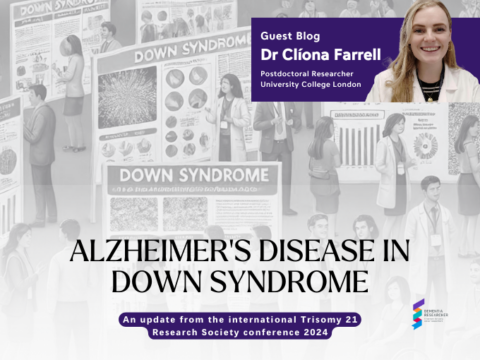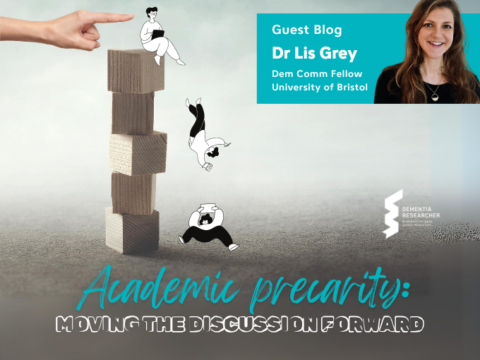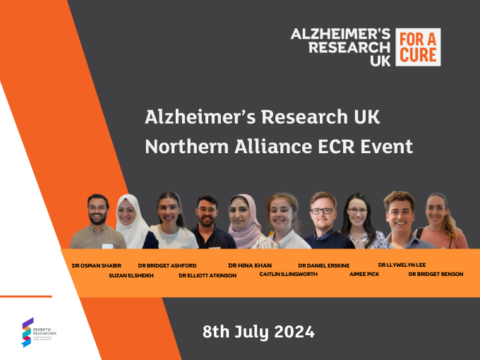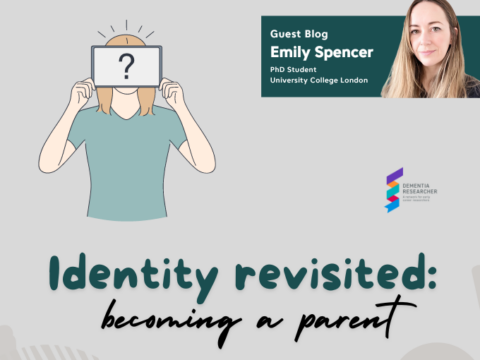The University College London (UCL) Alzheimer’s Research UK (ARUK) Network Scientific meeting took place on the 7th of September 2018. It was a one-day event, which allowed ARUK Network members from across different departments at UCL to showcase their research. Missed out? Here’s a brief overview of the day for you.
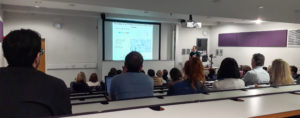 Following the welcome and introduction by the organisers, the day started off with Professor Alan Thompson, Dean of University College London (UCL) Faculty of Brain Sciences, providing an outline dementia research taking place at UCL. He particularly highlighted the UK Dementia Research Institute (which opened in July 2018) and the Queen Square Brain Bank, before mentioning Join Dementia Research, an online register matching researchers to thousands of potential volunteers who want to be involved in research.
Following the welcome and introduction by the organisers, the day started off with Professor Alan Thompson, Dean of University College London (UCL) Faculty of Brain Sciences, providing an outline dementia research taking place at UCL. He particularly highlighted the UK Dementia Research Institute (which opened in July 2018) and the Queen Square Brain Bank, before mentioning Join Dementia Research, an online register matching researchers to thousands of potential volunteers who want to be involved in research.
Next, Dr Rosa Sancho from ARUK provided a brief overview of the funding opportunities that ARUK offer. She also mentioned AMRC Open Research, a platform launching in October, which allows rapid author-led publication and open peer review of research funded by AMRC member charities. Visit the following link and check out the FAQs: https://amrcopenresearch.org/faqs.
Next in the program, 13 early career researchers presented 3-min flash poster presentations. All the presenters rose up to the challenge, keeping to time and presenting on topics ranging from tau biomarker in frontotemporal dementia to frizzled receptors and synaptic plasticity. The poster presentations were displayed in the foyer throughout the day.
The session following the morning coffee break started off with a fantastic presentation by Shannon Shibata-Germanos who highlighted the important role of the glymphatic system, which is thought to aid in the clearance of molecular ‘waste’ from the brain. Then, Professor Frances Edwards provided an overview of the work being done by her lab who are studying several transgenic mouse models of human mutations in the amyloid pathway or microtubule-associated protein tau. Professor Edwards acknowledged the limitations of working with these models, including the short life-span of the animas (equivalent to 50 human years) and limited neurodegeneration at the end-stage of disease. However, she feels the we should all continue working toward better disease models. Next, Phoebe Walsh, a first-year PhD student presented the work she hopes to carry out looking at the link between white matter degeneration and cognitive decline in a familial Alzheimer’s disease cohort. Professor Adrian Isaacs then shared an overview of the research being conducted in his lab on C9orf72 – the most frequent single gene that causes neurodegenerative disease, before Dr Frances Wiseman shared a “flavour” of her group’s work on the link between Alzheimer’s disease and Downs syndrome. The session ended with Dr Carlo Sala Frigerio (the DRI’s latest recruit who starts in November!) sharing what he hopes to achieve when he establishes the Single Cell Genomics Lab. Dr Frigerio is currently looking for research assistants and PhD students in bioinformatics/statistics to join the lab, so if you are interested email him at: c.frigerio@ucl.ac.uk.
After a smashing lunch, Dr Tammaryn Lashley provided an overview of the Queen Square Brain bank and the tissue request process. She also shared the work her lab is doing with post-mortem human brain tissue, including investigating the expression of neurofibrillary tangles and tau in the presubiculum. Next, Dr Selina Wray (who played a huge role in organising the day) shared a snapshot of the work being conducted in the iPSC lab, including longer-term cell cultures that will provide better mechanistic insights into autosomal dominant dementias like Alzheimer’s disease and frontotemporal dementia. Next, Dr Jamie Bilsland provided an overview of the ARUK UCL Drug Discovery Institute, which was established in 2015, and the work they do at the very early stages of drug discovery. Finally, Dr Amanda Heslegrave shared the research being conducted at the UK DRI Fluid Biomarker lab, highlighting the biobank resource that is available for use with over 70,000 human fluid aliquots.
Finally, just before afternoon coffee, the first external speaker for the day, Dr Ben Falcon from the MRC Laboratory of Molecular Biology at Cambridge University, provided an overview of using cryo-electron microscopy (EM) to study tau filament structures in human neurodegenerative disease. Dr Falcon, who recently published his work on Pick’s disease in Nature, shared some beautiful images of straight tau filaments and paired helical fragments, which highlighted the power of suing cyro-EM as a molecular tool.
The day ended with a plenary talk by Lucia Chavez Gutierrez, from the VIB-KU Leuven Centre for Brain & Disease Research, who made a compelling case for familial Alzheimer’s disease mechanisms being conserved and important in sporadic Alzheimer’s disease too.
Overall, the day was a huge success. Attendees told me that they appreciated the opportunity to network with colleagues from other departments who are also working on dementia and form new collaborations!
Author
Dr Lakshini Mendis is a Research Assistant and Project Officer within the Office of the NIHR National Director for Dementia Research based at University College London. Lakshini is working on various initiatives aimed at meeting the research objectives detailed in the governments 2020 Dementia Challenge.
You can follow Lakshini on Twitter Follow @BLHSMendis

 Print This Post
Print This Post